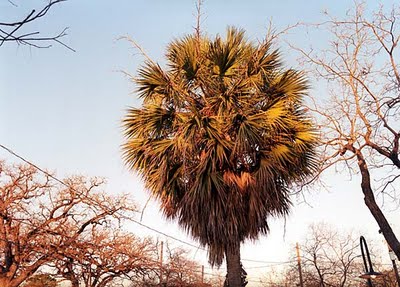Tema Stauffer
Saturday, 3 October 2009
Work from American Stills.
“To perceive and subsequently reveal an inherent beauty in what may be characterized as “commonplace” requires the observer (i.e. the photographer) to consider specifically the act of seeing what is “there” or simply what “is.” Images that suggest recognition and acceptance of the banal differ from those, perhaps more pervasive images, that confer emotion and meaning with loaded subject matter or blatant content. These latter images may allow for an accelerated or undemanding “read” of the image, and as a result, may be more immediately accessible to the viewer. Considering the ubiquitous use of photographic images employed across a multitude of contexts (e.g., commercial, corporate, academic, artistic), less ease may be experienced by the individual when viewing what could be described as ambiguous or indirect images. When confronted with an image that does not at once suggest a narrative or an emotional state, for instance, one may be tempted to label the image as empty or lacking meaning. However, these same images may provide the rare opportunity for individual interpretation and interaction with the work, or for unadulterated acceptance of the image on its own terms. In discussing intrinsic value contained in what may be described as the “real” or the “actual”, noted photographer and author Stephan Shore states, “Chinese poetry rarely trespasses beyond the bounds of actuality. Whereas Western poets will take actualities as points of departure for exaggeration or fantasy, or else as shadows of contrast against dreams or unreality, the great Chinese poets accept the world exactly as they find it in all its terms, and with profound simplicity find therein sufficient solace. Even in phraseology they seldom talk about one thing in terms of another, but are able enough and sure enough as artists to make the ultimately exact terms become the beautiful terms.”
It is in this way that Tema Stauffer makes known the subject of her photographs without prejudice, and allows the viewer to observe situations, objects, or environments in a new context, and to reveal the subtleties present in these ostensibly ordinary images. In a series of photographs taken at what appears to be a vacant water park, the viewer is afforded the opportunity to consider the artist’s motives. One might take into consideration narrative possibilities, emotional content, and socio-cultural commentary. Ultimately, the images act to invite our attention to a scene that we may have encountered but ignored, uninterested in considering it further. In making this selection, Stauffer begins to elevate the perceived “usual” into something unexpected, imbuing objects with an importance that heretofore went unnoticed. The scale of many of her works also acts to emphasize the significance of the image, imparting status via size. Allowing for recognition of details, this format (at times) permits the viewer to associate with the subject matter more closely, effectively challenging previous photographic conventions and commenting on the discrepancies between the real and the represented. To attempt to fully understand these images or determine absolutes concerning the artist’s intentions or the viewer’s responsibility can, at times, become problematic or wholly undesired. Referring again to the possibilities of interpretation, the artist can purposely and repeatedly (working in series) provide multiple means of conceptual or theoretical entry into the work, directing but not entirely dictating the analysis. In responding to an enquiry regarding the meaning of his work, Carl Philip Heuschrecke states, “By writing you an answer, Sir, I will undoubtedly deny you the pleasure of opening your Own eyesÉI will provide you with figures and with parallels, but I leave it to you to figure their relevance.”
The work contained in this exhibition, American Stills, features large-scale photographic C-Prints (a specific method of color photographic printing) representing Stauffer’s most current projects. As an example, Front Yard (2003) depicts a winter residential scene, seemingly not long after a new-fallen snow. It is dark, but a definite light source appearing to originate from the street distributes light to the ground, resulting in a reflective glow. Due to the character of this illumination, the image, although printed in color, takes on a distinctly monochromatic appearance. One could argue the conventional idealistic representation of a similar scene would consist of a frontal or more direct view of the house and it’s surroundings, with a camera position or perspective originating at the street, looking in on, not out from a specific location. Presenting nearly a reversal of this view, Stauffer captures an unexpectedly idyllic scene, despite that a driveway inhabits the majority of the foreground. Also noteworthy is a political sign posted in the front yard, its lettering reversed as merely the back is visible. Although the subject matter is subdued, it’s placement and inclusion in the photograph becomes exceedingly important. By presenting this scene in such a manner, Stauffer skillfully and subtly illustrates the significance of perspective or point of view, allowing the viewer to consider the role of observer versus observed.” – Kris Douglas for the Rochester Art Center




